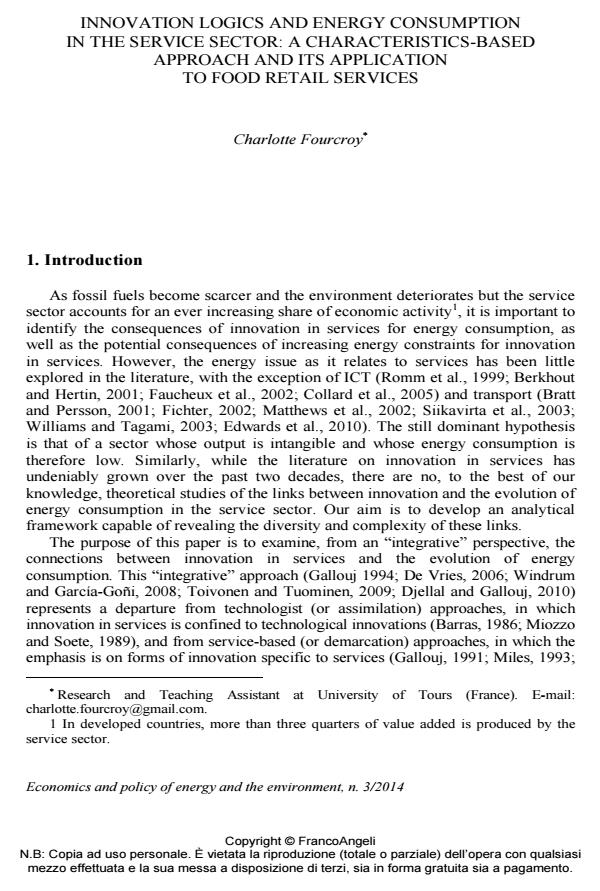Innovation logics and energy consumption in the service sector: a characteristics-based approach and its application to food retail services
Journal title ECONOMICS AND POLICY OF ENERGY AND THE ENVIRONMENT
Author/s Charlotte Fourcroy
Publishing Year 2015 Issue 2014/3
Language English Pages 24 P. 115-138 File size 1376 KB
DOI 10.3280/EFE2014-003007
DOI is like a bar code for intellectual property: to have more infomation
click here
Below, you can see the article first page
If you want to buy this article in PDF format, you can do it, following the instructions to buy download credits

FrancoAngeli is member of Publishers International Linking Association, Inc (PILA), a not-for-profit association which run the CrossRef service enabling links to and from online scholarly content.
The contribution of services to wealth and job creation in contemporary economies continues to increase, as does their demand for energy. However, the energy issue as it relates to services has been little explored in the literature, with the exception of ICT and transport. The still dominant hypothesis is that of a sector whose output is intangible and whose energy consumption is therefore low. Similarly, while the literature on innovation in services has undeniably grown over the past two decades, the question of the relationship between innovation in services and the evolution of the demand for energy has been neglected. This article is devoted to an analysis of this relationship. The aim is to develop an analytical framework capable of identifying the consequences in terms of energy of different innovation logics in services. The framework is then applied to the case of food retailing.
Keywords: Service industries, service innovation, energy consumption
Jel codes: L80, L81, Q59
- Achieving Sustainable E-Commerce in Environmental, Social and Economic Dimensions by Taking Possible Trade-Offs Judit Oláh, Nicodemus Kitukutha, Hossam Haddad, Miklós Pakurár, Domicián Máté, József Popp, in Sustainability /2018 pp.89
DOI: 10.3390/su11010089
Charlotte Fourcroy, Innovation logics and energy consumption in the service sector: a characteristics-based approach and its application to food retail services in "ECONOMICS AND POLICY OF ENERGY AND THE ENVIRONMENT" 3/2014, pp 115-138, DOI: 10.3280/EFE2014-003007